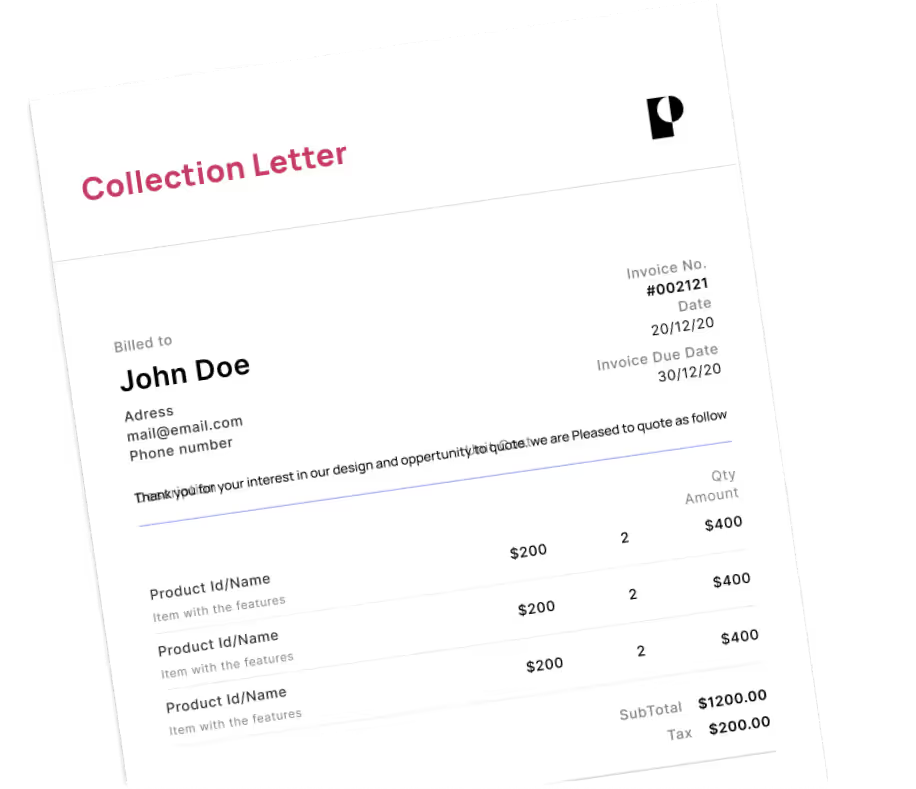Top-Rated Debt Collection Agency in Ohio
Efficient and Trustworthy Debt Collection in Ohio - No up-front fees, pay only when we succeed. Request a FREE Consultation or submit your claim today.

Maximize Debt Recovery in Ohio with Debitura's Unmatched Collection Services
Maximize Debt Recovery in Ohio with Debitura's Unmatched Collection Services: Partnering with Debitura, the expert Debt Collection Agency Ohio trusts, ensures effective debt recovery solutions for your business. Our dedicated team diligently navigates Ohio's legal landscape, helping you manage accounts receivables, dispatch notice letters and undertake pre-legal to legal proceedings. At Debitura, we're not just about recovering debts, we’re your partners in bolstering financial stability and accelerating business growth.

A to Z debt recovery solutions for Ohio businesses.

Data-driven, personalized debt recovery in Ohio.

Harnessing 500+ international experts for efficient debt collection.

Reliable 87% debt recovery rate in Ohio at minimal cost.
Key facts
- Debt Collection Laws: Debt collection in Ohio is regulated by both federal and state laws.
- Statute of Limitations: Ohio has varying statutes of limitations for different types of debts.
- Debt Collection Process: Debt collection lawsuits in Ohio are initiated through a notice pleading process.
- Garnishment: After obtaining a judgment, the most common form of collection in Ohio is through garnishment.
- Judgment Liens: Judgment liens can be placed on real property owned by the debtor in Ohio.
- Collection Costs and Fees: The average collection costs and fees vary depending on the court in Ohio.
- Collection License: No collection license is required in Ohio, but foreign corporations must hold a license.
- Consumer Protection: The Ohio Attorney General protects consumers against deceptive debt collection practices.
- Interest Rates: Ohio interest rate laws cap interest at 8 percent, with certain exceptions.
- Small Claims Limit: The small claims limit in Ohio is $6,000.
This guide is not legal advice and laws/rules may change; consult a qualified professional for personalized assistance. Use at your own risk.
Introduction to Debt Collection In Ohio
In understanding the debt collection process in the state of Ohio, it is crucial to first define what debt collection entails. Debt collection is the procedure through which creditors (entities to which money is owed) recover funds that have not been paid back by debtors (individuals or organizations that owe money). This process is often facilitated by a collection agency, a third-party entity given the responsibility of procuring the debt on behalf of the creditor.
There are three primary actors involved in the process of debt collection: the debtor, the creditor, and the collection agency. The debtor is the individual or organization that has an outstanding monetary obligation to the creditor. The creditor is the entity that initially provided capital, goods, or services on a promise of future payment. The collection agency is the entity that steps in to assist the creditor in recovering the funds, especially when the debtor defaults on the agreed terms of payment.
Key Stages in Debt Collection
The process of debt collection in Ohio can be compartmentalized into three key stages: pre-legal, legal, and debt enforcement. The pre-legal stage involves all actions taken before legal proceedings are initiated in an attempt to recover the debt. This stage includes sending reminders and notices of the outstanding debt to the debtor, negotiating for repayment terms, and initiating a formal demand for payment. The objective of this stage is to recover the debt without resorting to legal proceedings.
Should the pre-legal strategies prove unsuccessful, the next step is the legal stage. At this point, the creditor or the collection agency initiates legal action against the debtor. This legal action can range from a small claims court case to a full-scale lawsuit, all dependent upon the amount of the debt and the circumstances surrounding the debt.
The final stage in the debt collection process is debt enforcement. If a court ruling is resolved in favor of the creditor, the court may implement measures to ensure the debt is paid. These measures may include wage garnishment, property liens, or even forced sale of assets. This is a last resort in debt collection and is only implemented after legal proceedings have concluded.
These stages provide a generalized overview of the debt collection process in Ohio. The details of each stage may vary depending on the specific nature of the debt, the practices of the creditor or collection agency, and the legal context. However, understanding these stages can assist individuals and businesses in navigating the complex world of debt collection in Ohio.
Debt Collection Laws In Ohio
Debt collection in Ohio is a process governed both by federal and specific state laws. Federally, the primary bodies of legislation governing the conduct of debt collection agencies are the Fair Debt Collection Practices Act (FDCPA), the Fair Credit Reporting Act (FCRA) which dictates how collection agencies can impact credit ratings, and the Telephone Consumer Protection Act which regulates how these agencies can contact debtors. These federal laws considerably influence the nationwide practices of debt collection.
The FDCPA, for instance, prohibits collection agencies from using abusive, unfair, or deceptive practices when collecting debts. It also requires debt collectors to respect a debtor’s privacy, preventing them from contacting the debtor at inconvenient times or places, like early in the morning or late at night, unless given permission by the debtor. If represented by an attorney, the debt collector must communicate with the attorney rather than the debtor.
These federal laws are overseen by the Consumer Financial Protection Bureau (CFPB), as well as the Federal Trade Commission (FTC). These bodies are tasked with ensuring that debt collection agencies adhere to the rules outlined in the FDCPA, FCRA, and other relevant federal laws, making certain that consumers are protected against unjustifiable practices.
Ohio Debt Collection Laws
While federal laws do create a nationwide baseline for debt collection practices, individual states often have additional regulations. In the state of Ohio, these laws interact with federal laws to further regulate the process of debt collection and add additional layers of protection for consumers residing in Ohio.
The statute of limitations for different types of debts in Ohio are: four years for the sale of goods, six years for promissory notes and oral contracts/accounts, and eight years for written contracts. Additionally, Ohio has a "borrowing statute" which takes into account the laws from other jurisdictions if the default occurred prior to April 7, 2005.
Ohio law further outlines the courts where debts should be filed, the process of initiating debt lawsuits through notice pleading, and how claims should be served to the debtor. It’s also noteworthy that after obtaining a judgment, the most common form of collection in Ohio is through garnishment, either directly from personal earnings or other properties. Certain benefits, however, are exempt from garnishment, providing some level of asset protection to the debtor.
Consumer Protection in Ohio
It is important for consumers to know their rights under Ohio law. State agencies such as the Ohio Attorney General's Office have taken action against debt collectors who have been found to violate the Consumer Sales Protection Act (CSPA). This law protects consumers from deceptive practices like sending misleading notices of court action or using forms that simulate official court documents.
Creditors wishing to attach a lien on a debtor’s property after obtaining a judgment, for example, have to file a certificate of judgment with the Clerk of the Court of Common Pleas in the county where the debtor owns real property. These liens remain for five years.
The average costs associated with collection also vary depending on the court. To conduct business in Ohio, foreign corporations must hold a license with the Secretary of State, though federal laws preempt this requirement for federally chartered banks.
In conclusion, consumers residing in Ohio are granted a measure of protection from both federal and state laws. They should familiarize themselves with these laws, and if necessary, seek legal counsel. This not only safeguards them from potential abuse, but also helps create a more fair and balanced debt collection landscape in Ohio.
Risk Free Debt Collection
Upload your claim and get started with our 100% no-cure-no-pay collection solution.
The Debt Collection Process In Ohio
Understanding the debt collection process in Ohio can help businesses and individuals navigate financially complicated situations with more confidence. As with all states, Ohio has specific laws and processes that dictate how debt collections can be initiated, enforced, and resolved. The process may seem intimidating, but a deeper look into each stage can bring clarity and help enforce your rights as a debtor or creditor.
Evaluating the Case
The first step in the debt collection process is evaluating the case. This involves confirming the validity of the debt and checking whether it is within the statute of limitations for collection. Ohio's statute of limitations varies depending on the type of debt involved, so understanding these parameters is critical. A creditor cannot legally attempt to collect a debt that has surpassed its statute of limitations.
Furthermore, debt collection in Ohio is regulated by both federal and state laws. Thus, proper evaluation should account for these guidelines to ensure that the rights of both the creditor and debtor are respected throughout the process. This stage also involves understanding the debtor's ability to pay, which might affect the following steps in the process.
Pre-Legal / Amicable Phase
Prior to initiating any legal action, creditors typically engage in a pre-legal or amicable phase. This approach involves reaching out to the debtor through various channels, including phone calls, emails, or mailed letters, in an attempt to find a favorable and mutual solution. This step is regulated by the Fair Debt Collection Practices Act (FDCPA) which prohibits debt collectors from using abusive, unfair, or deceptive practices to collect debts.
Efforts during this stage may include negotiating a payment plan or compromise that would alleviate the need for further legal action. It's important to know that the Ohio Attorney General enforces consumer protection laws, including those related to debt collection. Consumers should not hesitate to reach out to the Attorney General's office if they feel their rights are being violated.
Legal Considerations and Procedures
If the pre-legal attempts fail, the next stage is considering the legal avenues for debt collection. Debt collection lawsuits in Ohio are primarily initiated through a notice pleading process. However, this approach may vary depending on the type of debt and the specific circumstances of the case.
For smaller amounts, the case might fit into Ohio's small claims court procedures. The limit for such cases in Ohio is $6000. It's vital for both the creditor and debtor to understand these thresholds, as they dictate the process and potential outcome of legal proceedings. Legal action can be a complicated and lengthy process, therefore it should be considered only when pre-legal attempts at resolution have failed.
Post-Judgment Collection and Garnishment
If a court judgement is obtained, the debt enforcement procedures begin. The most common form of debt collection in Ohio post-judgment is through wage garnishment. This process involves direct deductions from the debtor's income to cover the owed amount. A judgement lien may also be placed on the debtor's real property in Ohio as another avenue for debt enforcement.
The exact parameters for wage garnishment and judgment liens are set out in Ohio law, and compliance with these rules is essential to ensure the process is carried out legally and fairly. It's important to note that Ohio's interest rate laws cap interest at 8 percent, with certain exceptions, which will affect the total payable amount in a judgement.
Armpit with thorough knowledge of Ohio's debt collection process and a solid understanding of the relevant laws, both creditors and debtors can ensure they approach debt collection in a legal, fair and efficient manner.
Statute of Limitation in Ohio
In Ohio, the Statute of Limitation refers to the time period determined under the state law within which a creditor can take legal action to collect a debt. Once a debt is past this time limit, it is considered as "time-barred" and the debtor is no longer legally responsible to repay it. However, it's important to note that although a time-barred debt can't be legally collected, it can still impact a debtor's credit score and may be pursued by the creditor in various ways. Understanding the Statute of Limitations is crucial in debt collection processes as it protects individuals from being sued over old, forgotten, or no-longer-existing debt.
Ohio Statute of Limitations for Different Types of Debt
Ohio residents should be aware that the statute of limitations can vary greatly depending upon the type of debt. Creditors in Ohio have a specific window within which they can take legal action to collect: for written contracts, the period is 6 years; for oral contracts, the period is either 4 or 6 years, depending upon the specific arrangements of the contract.
Injury cases have a statute of limitations of 2 years; this period begins from the date when the injury was discovered or reasonably could have been discovered. If a claim for personal injury is not filed within this period, it might be barred regardless of its merits. For property damages, the statute of limitation is 4 years for real property and 2 years for personal property. These time periods are defined under the Ohio Revised Code section 2305.03.
It is important to consult with a legal professional to understand these limitations because the calculation of the starting date can sometimes be complex and interpretations may vary. The nature of the debt, specific state laws, and even the actions of the debtor can all influence when the clock starts ticking.
Why Statute of Limitations Matter?
The statute of limitations plays an important role in debt collection for both debtors and creditors. For debtors, it serves as a protection against legal actions on old or forgotten debts. A debt that is beyond the statute of limitations is technically uncollectable and a debtor can take legal steps to prevent a debt collector from pursuing such a debt.
For creditors, this timeframe represents the legally provided window in which they are allowed to collect the debt. If a debtor hasn't made any payment toward a debt for a certain time, and the period of the statute of limitation has run out, the creditor loses the right to a legal remedy in court to force repayment of the debt.
However, it’s crucial to note that actions such as making a payment, entering a payment plan, or even acknowledging the debt can potentially reset the clock on the statute of limitations. Therefore, debtors should always be cautious about taking any action without legal advice.
Interest Rates on Late Payments in Ohio
Interest rates on late payments play a significant role in debt collection due to their potential of increasing the owed amount exponentially. Essentially, these are percentages added to the initial debt because of late or missed payments. In Ohio, like many other states, there are laws usually referred to as "usury" laws, to cap the amount of interest that can legally be charged.
According to Ohio's interest rate laws, this cap is set at 8 percent. However, it does not apply to all situations. In specific circumstances, parties can agree to a higher interest rate. The law allows for increased rates where the original amount of principal is over $100,000, the payment is to a broker or dealer registered under the Securities and Exchange Act of 1934, the debt is secured by a mortgage or deed of trust, it is payable on demand or in one installment and not secured by household goods, or it is a business loan. This flexibility falls under what is known as "contractual interest".
The term "usury" dates back to medieval times when it was used derogatorily for lending money at any interest rate. Today, though it describes excessive rates, it is often associated with morally reprehensible lending. Despite this, higher rates beyond the legal limit are common in financial transactions like credit card balances and payday loans. These rates are accepted by consumers when agreeing to the debt terms, showcasing the importance of comprehending the contract's fine details.
The specifics of Interest Rates in Ohio
Beyond conventional interest rates, Ohio has specified a few other conditions to avoid unlawful interest rates. For any usury or unlawful interest rate, the penalty in Ohio sees the excess interest applied to the principal. For interest rates on judgments, it is the contract rate, otherwise 10 percent.
The exceptions to this are when the amount exceeds $100,000; the broker or dealer is registered; the debt is secured by a mortgage or deed of trust, or it is a business loan. Thus, understanding these specifics can be beneficial for businesses operating in or consumers residing in Ohio.
While laws can change over time, the current standards uphold these rules to protect consumers and businesses alike. For precise information on Ohio's interest rate laws, refer to the Ohio Revised Code or consult with an Ohio consumer protection attorney.
Overall, understanding the interest rates on late payments matter significantly in Ohio. Knowledge in this domain helps individuals in successful debt management and allows loan gives to operate lawfully and ethically. As always, reading and understanding the fine print can help parties on all sides navigate interest rates effectively.
Late Payment Fees in Ohio
In the realm of debt collection, late payment fees are a significant component that debtors should be aware of. These fees represent the additional charges a debtor may incur if a bill payment goes past its due date. The importance of understanding late payment fees goes beyond just knowing what they mean. In essence, these charges affect the amount of debt a person, or a business owes. It's vital to understand late payment fees as they can substantially increase the overall repayment amount.
As a part of the debt collection process, businesses often impose late payment fees as an incentive for customers to pay their bills on time. However, these fees significantly impact individuals who are already struggling financially, as they can increase the debt quickly, making it even more difficult to offset.
In the state of Ohio, the rules regarding these fees are fairly lenient for businesses.
Rules Regarding Late Payment Fees in Ohio
In Ohio, there is no law that sets a maximum limit for late payment fees. This means that businesses can technically set their late fees at any rate. Nevertheless, they are typically encouraged to keep these fees reasonable to maintain good customer relations, as exorbitant fees can lead to poor business reputation or legal disputes.
Moreover, Ohio law does not require businesses to allow a grace period before applying the late fee. Right after a payment becomes overdue, businesses can start applying the late payment fees. However, as a measure of goodwill, and to encourage prompt payment, some businesses may choose to offer a grace period, traditionally around seven days, before applying late fees.
That being said, it's crucial for any debtor to understand the terms and conditions associated with any credit or payment arrangement. Fully understanding late payment fees, their implications, and how they are applied, can help individuals better manage their financial obligations and avoid getting caught in a spiraling debt trap.
Small Claims Procedures in Ohio
Ohio's Small Claims Courts offer a streamlined and affordable channel for debt recovery. The process allows individuals or businesses to pursue financial disputes that fall below a certain monetary threshold. To successfully navigate a Small Claims Court proceeding, it is crucial to understand what these procedures entail, the scope of laws that govern them, and the limits imposed on the claim's worth.
Defining Small Claims Procedures and its Importance for Debt Recovery
In Ohio, small claims are handled by the Small Claims Division found in county and municipal courts. These courts provide an essential avenue for debt collection by allowing creditors to reclaim debts without incurring the hefty legal costs associated with standard court proceedings. Ohio Revised Code Ann. Sections 1925.01 to 1925.18 provide these statutory guidelines. Meanwhile, the Ohio Rules of Civil Procedure, Rules 3 and 4.1, along with Rule 4 of the Ohio Rules of Appellate Procedure, also govern the technical aspects of filing and following up with a claim.
One can visit www.ohiojudges.org/citizen-guide-brochures and www.supremecourt.ohio.gov/JudSystem/trialCourts to access these resources and other court-related information. Insight into the state statutes can be found at http://codes.ohio.gov/orc. These resources are essential to guide you through the ins and outs of the small claims court procedures in Ohio.
Monetary Limitations and Legal Representation Guidelines
While small claims courts serve a significant role in debt recovery, it should be noted that Ohio caps the claim amount at $6,000. This means that a small claims court cannot award judgments for amounts exceeding this limit, irrespective of how valid the claim may be. Given this constraint, creditors should be mindful of the claim they can lodge in a small claims court.
Legal representation in Ohio's small claims procedures is permitted but not required. Given the simplicity of proceedings and the monetary restrictions, individuals or businesses might question the cost-effectiveness of hiring an attorney. However, legal counsel could potentially offer an edge in certain complex situations.
Geographical Jurisdiction and Other Important Procedures
The venue for filing cases is also dictated by specific rules. The plaintiff should file the claim in the county where the defendant resides or does business, the county where the activity or injury occurred, the county where the claim for relief arose, or the county where the property subject to the claim is located. The claim is served either by the sheriff or via certified mail by a clerk, return receipt requested.
A defendant is not expected to write a response; however, a counterclaim, if any, must be filed and served at least seven days before the trial date. Certain conditions could lead to the transfer of the case to a regular civil court, such as a defendant's counterclaim over $6,000. Appeals follow a two-level system, and renters and landlords should note that evictions are not handled in small claims court. Furthermore, jury trials are not permitted in these courts, ensuring a faster resolution to the disputes.
Wage Garnishment in Ohio
As part of the debt recovery process in Ohio, wage garnishment serves as a powerful tool in a creditor's arsenal. Wage garnishment, in simple terms, is the process through which a creditor can legally deduct money from a debtor's paycheck, subsequently applying it to the payment of an outstanding debt. This method is typically resorted to when a debtor fails to make voluntary payments or abide by an arranged repayment plan.
Garnishment orders in Ohio typically come into play after a judgment has been won against the debtor. The court then directs the debtor's employer to withhold a specific percentage from the debtor's wages, which is then redirected toward the payment of the debt.
The effectiveness of wage garnishment as a debt collection strategy is solidified by the ethical and legal responsibility it bestows upon both the debtor and their employer. It ensures a consistent stream of repayment, facilitating the recovery of dues while also providing certain safeguard measures for the debtor's finances.
Garnishment Laws in Ohio
In Ohio, laws governing wage garnishment are aimed at providing a fair and balanced system for debt recovery. The maximum amount that can legally be withheld from a debtor’s wages is established by a stringent set of rules. In general, the smaller of the following applies: either 25% of the debtor's weekly disposable earnings or any amount that exceeds thirty times the federal minimum hourly wage or the Ohio minimum wage, whichever is higher.
These restrictions provide much-needed relief to the debtor, ensuring they retain enough funds to cover basic living expenses. It is also essential to note that specific types of income, such as social security benefits, disability payments, and retirement earnings, are typically exempted from garnishment.
Moreover, Ohio law provides protections to the debtor against retaliation from employers due to a wage garnishment action. It is illegal for an employer to terminate, demote, or subject an employee to adverse employment action based solely on wage garnishment proceedings.
Understanding Your Rights and Responsibilities
While wage garnishment is a legitimate debt collection tool in Ohio, understanding your rights and responsibilities is crucial. If you have an outstanding debt, it's essential to explore all your options, such as negotiating with the creditor, setting up a payment plan, or considering bankruptcy, which could potentially halt the garnishment process.
It is also advisable to consult with an experienced attorney or legal expert to help navigate the implications of wage garnishment. This professional guidance can ensure you are abiding by all legal requirements while protecting your rights and interests.
In conclusion, being well-informed about wage garnishment practices in Ohio not only helps firms recover their due amounts effectively and legally, but it can also assist the debtors in managing their salaries while doing their bit in settling their debts.
.webp)
.png)
.avif)
.avif)
.avif)
.avif)
.avif)
.avif)
.avif)

.avif)

.avif)






.svg.avif)




.avif)
.avif)

.avif)
.avif)



.avif)



.svg.avif)

.avif)

.avif)
.avif)
.avif)
.avif)
.avif)
.avif)
.avif)
.avif)
.avif)
.avif)
.avif)
.svg%20(1).avif)
.svg)

